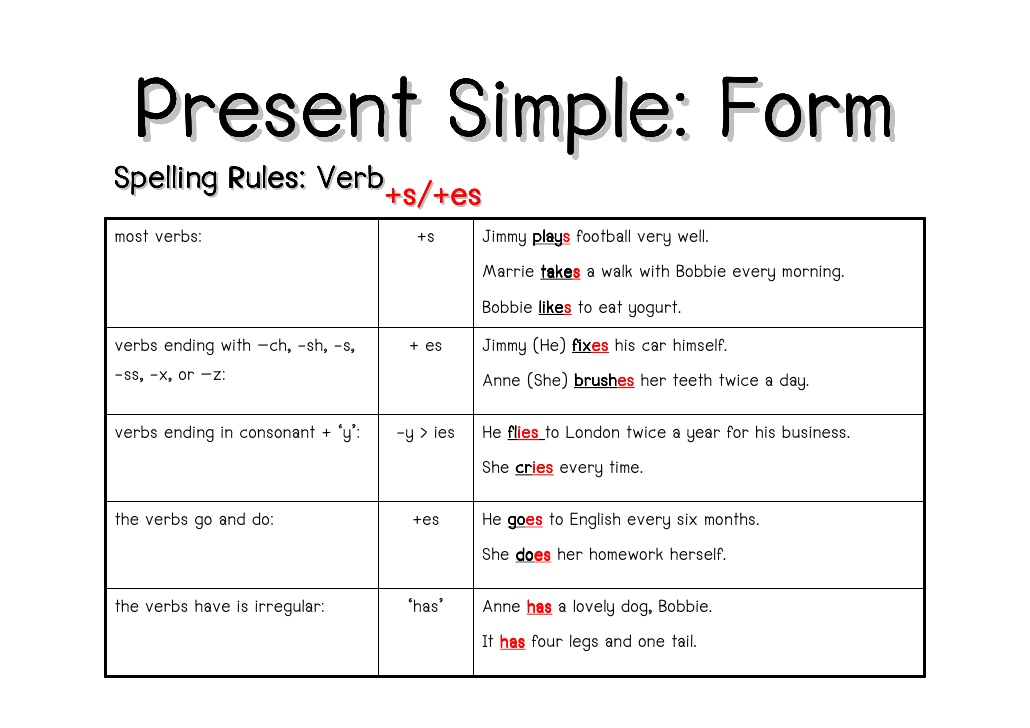
My English Corner for 2nd ESO Present Simple
When to use the Present Simple Tense. We use the simple present tense for 3 main reasons in English: 1 For Facts and things that are generally true. Doctors look after patients in hospitals. Brazil is a big country. 2 For habits, routines, repeated actions. I usually go out for dinner on Fridays. I wake up at 6 am every day.

My English Corner for 2nd ESO Present Simple
1. 'Understand' is something that you do regularly. 2. 'Understand' indicates something that's generally true. 3. 'Understand' is a state - there is one moment when you start to understand but then the state continues. 4. 'Understanding' is something you are planning to do in the future. Correct.

Structure ‘Use of the present simple’ Fly High English
Formy wyrażania przyszłości - Present Simple wprowadzenie Present Simple Present Continuous "will" future to be going to to be to Present Simple Tak, tak to czas teraźniejszy. Jednak to właśnie takich form czasownika używa się, gdy mówimy o rozkładach jazdy autobusów, pociągów, samolotów, o planach zajęć, grafikach itp. pozostałe zakładki:

New Have In Present Simple most complete Sado
Present Uses. 1: We use the present simple when something is generally or always true. People need food. It snows in winter here. Two and two make four. 2: Similarly, we need to use this tense for a situation that we think is more or less permanent. (See the present continuous for temporary situations.)

การใช้ Present Simple ที่ไม่ Simple สมชื่อ English Fandom
Present simple ( I work ) - English Grammar Today - a reference to written and spoken English grammar and usage - Cambridge Dictionary
เรียนเรื่อง*เรื่องน่ารู้ของ Present Simple วิชาภาษาอังกฤษ ระดับชั้น
The simple present is a verb tense with two main uses. We use the simple present tense when an action is happening right now, or when it happens regularly (or unceasingly, which is why it's sometimes called present indefinite). Depending on the person, the simple present tense is formed by using the root form or by adding s or es to the end.
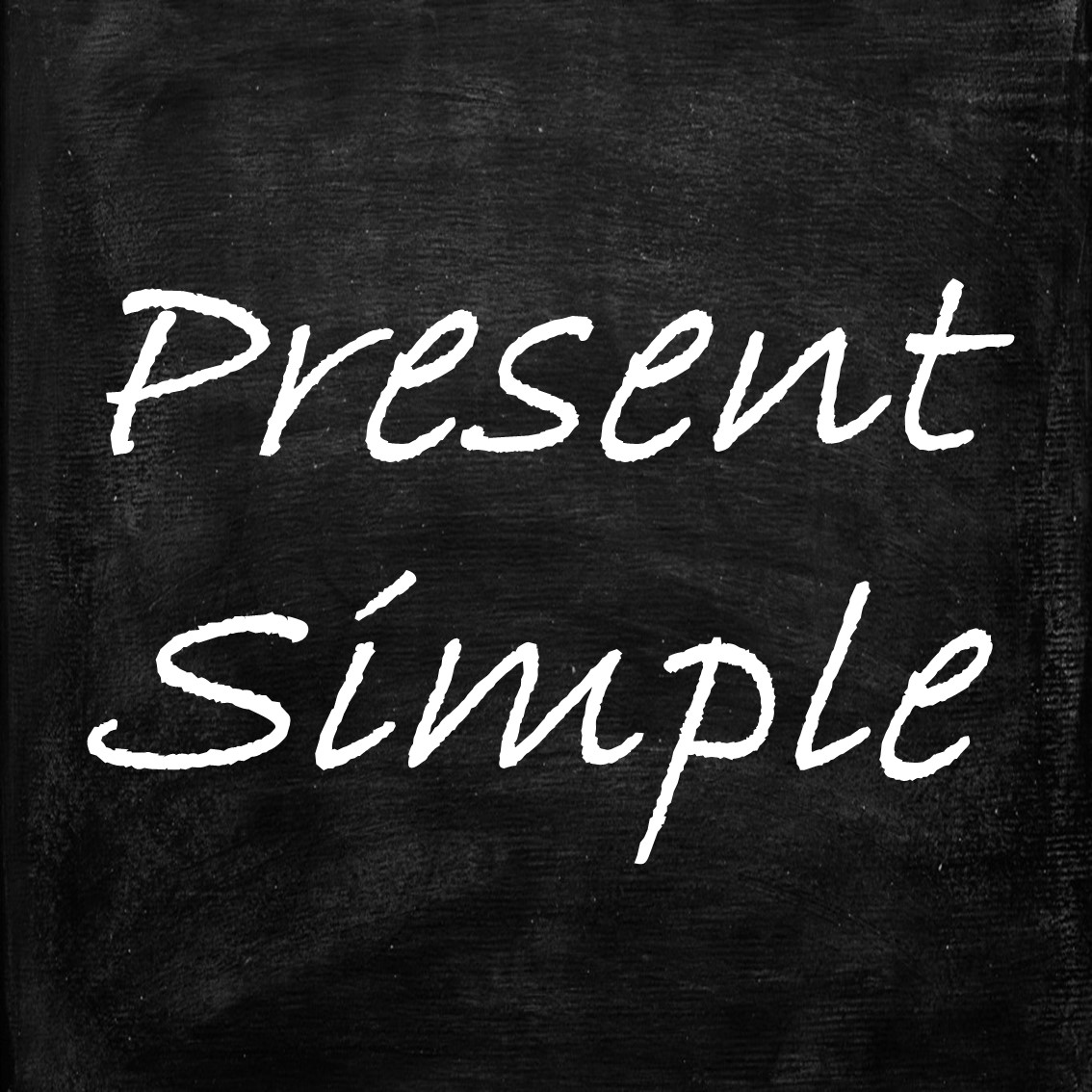
Czas Present Simple Budowa, użycie, zastosowanie, przykłady Speakin.pl
To talk about habits or actions that repeat. To talk about things that are habits (things you do regularly) or that are repeated, we also use the present simple. We could use the present simple in the sentence, "I read the newspaper every morning," for example, to show that reading the newspaper is a habit.
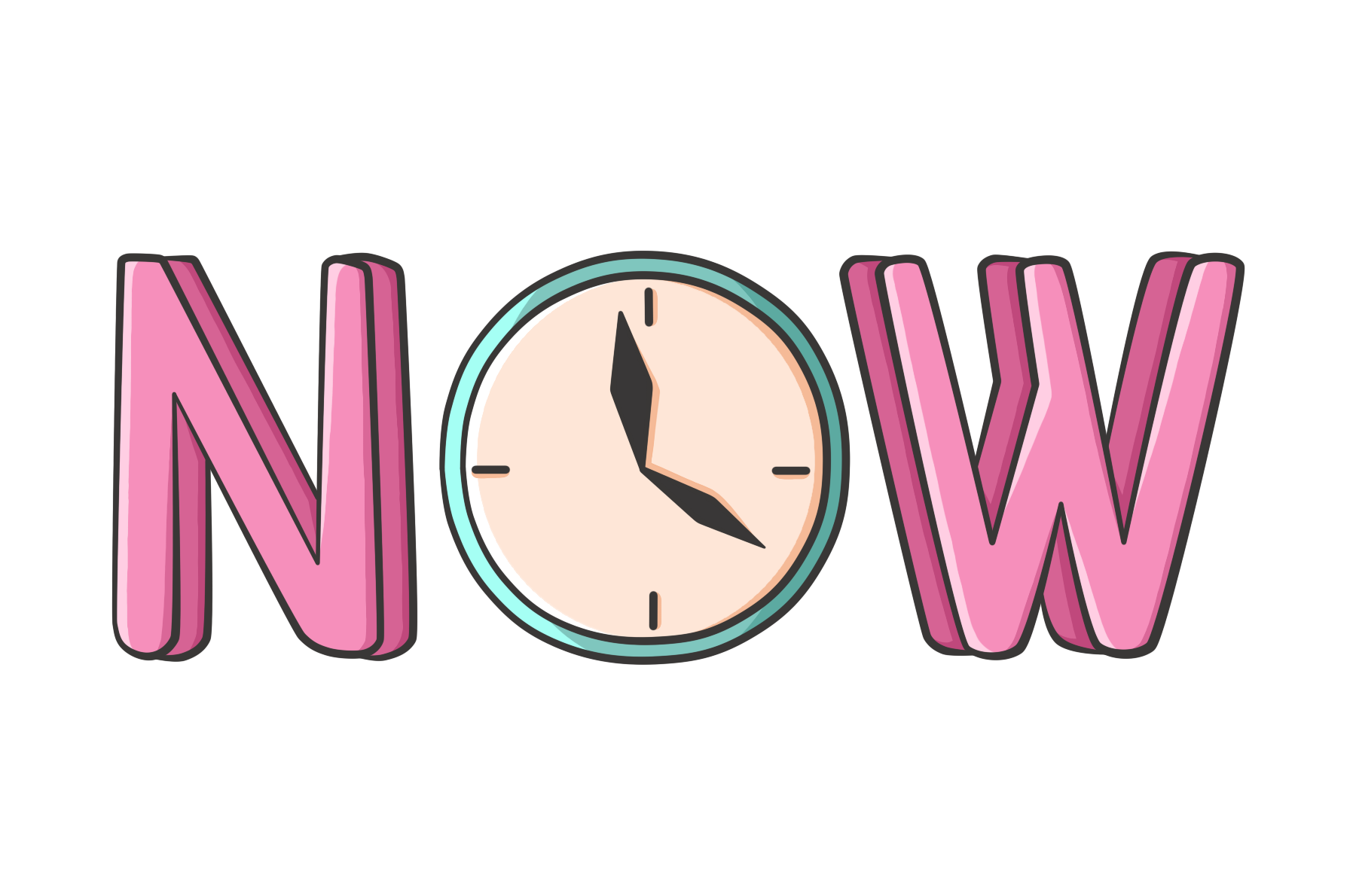
глагол buy в present simple
The simple present (also called present simple or present indefinite) is a verb tense which is used to show repetition, habit or generalization. Less commonly, the simple present can be used to talk about scheduled actions in the near future and, in some cases, actions happening now. Read on for detailed descriptions, examples, and simple.

The Present Simple YouTube
The first thing most, if not all your students did that day was surely 'wake up'. Write 'I wake up' on the board and then ask students what time they woke up. Then complete the sentence on the board to make the present simple sentence. For example, 'I wake up at 8.'. Do the same for other daily actions / routines and write these.

Present Simple презентация онлайн
Present Simple, czyli czas teraźniejszy prosty, to jedno z najbardziej podstawowych zagadnień dotyczących języka angielskiego. Nauka języka angielskiego zaczyna się zazwyczaj od poznania właśnie tego czasu. Present Simple wyróżnia się dwiema konstrukcjami zdania - z czasownikiem to beoraz z pozostałymi czasownikami.
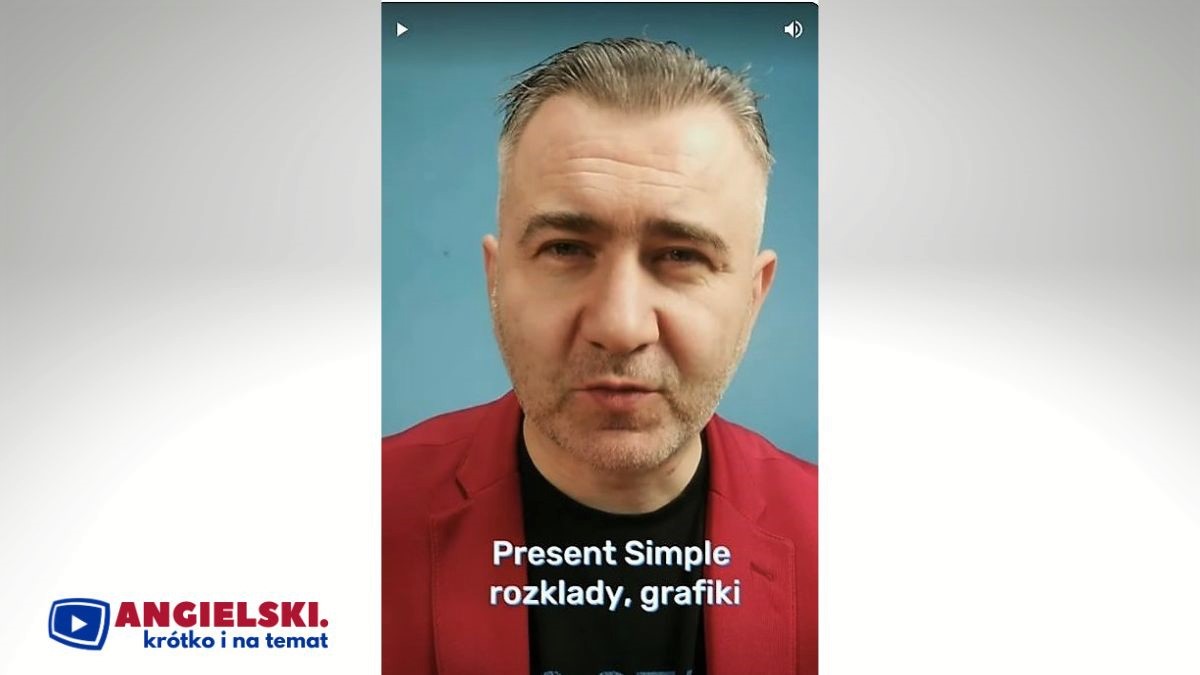
Jak wyrażać PRZYSZŁOŚĆ w Present Simple i Present Continuous
Present Simple The Present Simple tense is the most basic tense in English and uses the base form of the verb (except for the verb be ). The only change from the base is the addition of s for third person singular. How do we make the Present Simple tense? There are two basic structures for the Present Simple: 1. Positive sentences 2.

. Present Simple and Present Continuous
Yes, of course. We use the present simple to talk about things which are repeated every day, every week, every year, etc. I usually get up at 7 o'clock. During the week I have swimming practice on Mondays, I do taekwondo on Tuesdays and tennis on Thursdays. We always go on holiday in the summer. I see.
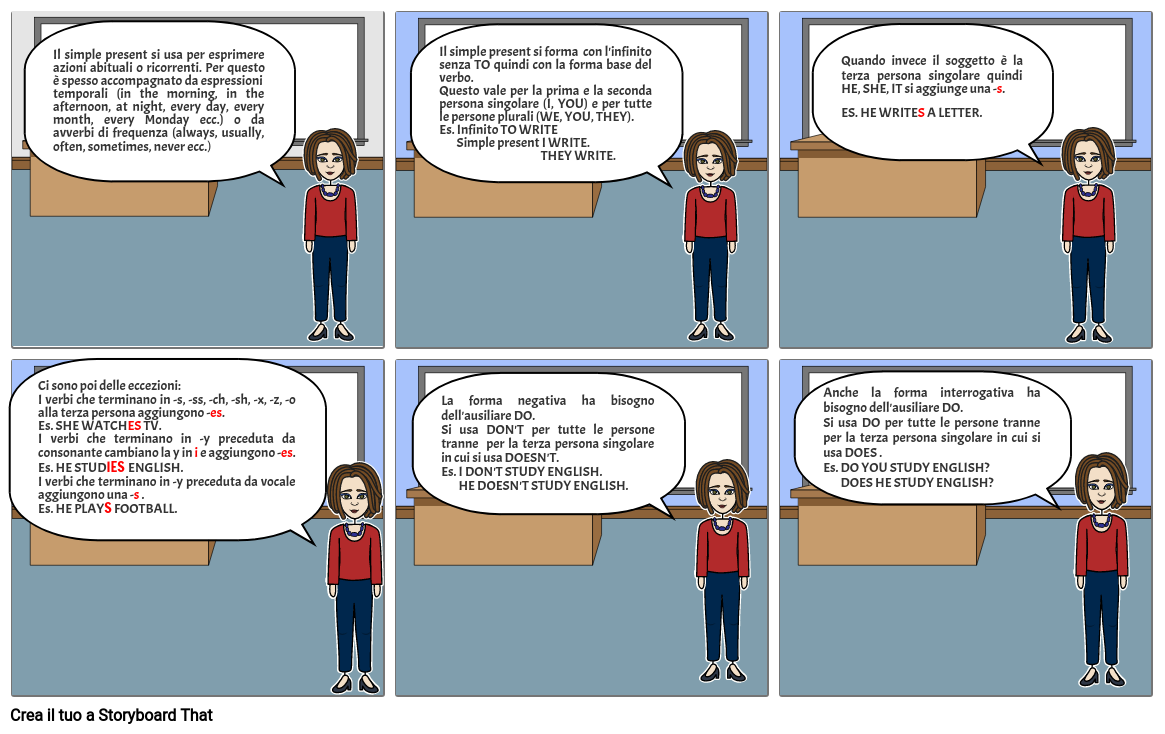
PRESENT SIMPLE Storyboard by a1eee295
The positive is really easy. It's just the verb with an extra 's' if the subject is 'he', 'she', or 'it'. Let's take the verb 'play' as an example: Don't forget the 's'! Even really advanced students do this! For a few verbs, there is a spelling change before the 's'. For example, 'study' becomes 'studies'. Click here for a list of these verbs .

Present Simple Practice 1 English Daisies
The simple present tense is a verb form used to talk about habits, unchanging situations, facts, and planned events in the near future. The simple present tense of most verbs is the infinitive form (e.g., "sing"). However, the third person singular (e.g., "he," "she," and "it") takes an "s" at the end of the verb (e.g., "write" becomes "writes").
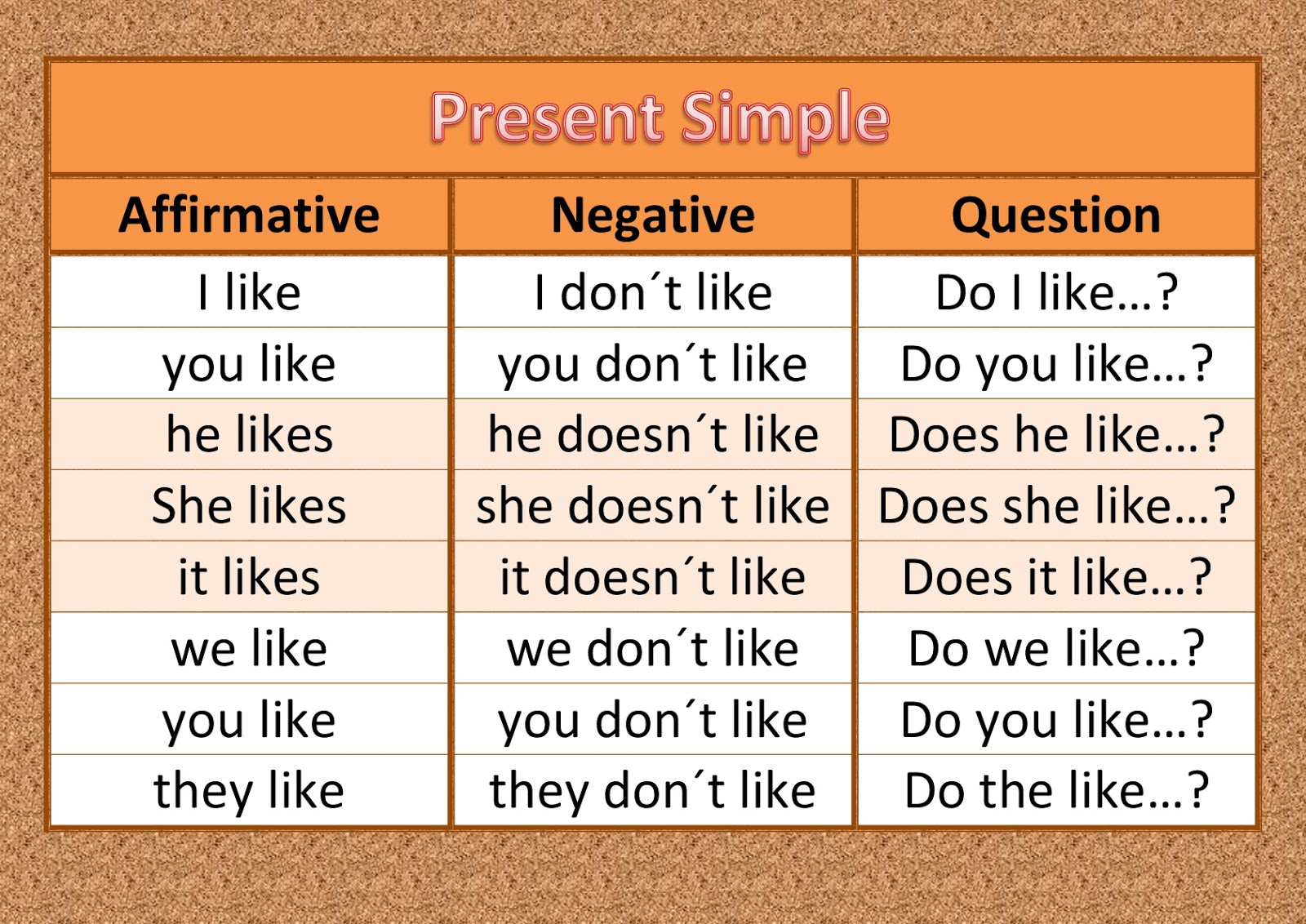
Learning Experiences Present Simple.
Forming the third person singular Most of the time, the simple present tense is the same as the verb's infinitive (aka base) form. The third person singular is used when the subject is neither the speaker nor the person being addressed and is a singular noun or pronoun (e.g., "he," "she," "it"). To form the third person singular in the simple present tense, "-s" is usually.

PRESENT SIMPLE TENSE Part 2 Making Sentences (Form) Basic English Gr...
The past simple is usually used: I reached school one hour ago. Also, the verb reach doesn't take a preposition, so delete 'at'. The second sentence is correct. But it's the present simple, not the present perfect (i.e. the verb have is the main verb, not an auxiliary verb). Have a look at our Present perfect page for more explanation. I hope.